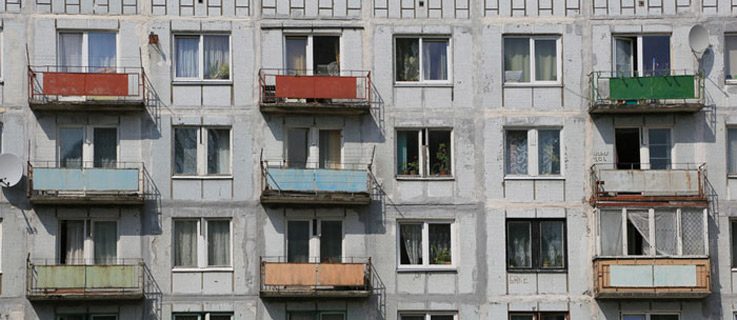Architecture and Integration
“To stop feeling like beggars”

In our interview, the sociologist Ingrid Breckner talks about how housebuilding and urban development can improve integration and how conflicts in society can be avoided.
Ms Breckner, how can housebuilding improve integration?
The way people live in other cultures differs from the way we live here in Germany. Many German architects do not know for example what a Muslim family’s requirements are when it comes to the layout of a flat. It starts with the question of gender separation: above a certain age, for instance, children have to sleep in different rooms. Hygiene requirements also differ. Finland is already responding to this, fitting public toilets with a shower attachment because many Muslims find using toilet paper unhygienic. Although it does not cost a great deal of money to install large numbers of such shower attachments, it means giving consideration to the needs of these people.
What kind of things can spark conflicts in our everyday lives together?
As far as communal areas shared by all of a building’s residents are concerned, it is important to clarify for example who is allowed to leave what in front of their door. What happens in hallways? Where is ventilation needed? Cooking smells can quickly give rise to conflicts. I live next door to a Turkish family and love Turkish food and its aromas, but their kitchen air vent channels the air directly into the lobby of the building. If someone who doesn’t like the smell is passing through there, an argument is almost bound to flare up.
What do architects need to consider in their plans?
If architects fail to think about the different requirements of residents when designing new flats, dissatisfaction or even conflicts can be the result. Most people do not like it for instance if other people can see into their flats. This problem can be resolved architecturally, however, with the result that residents do not have the feeling of being permanently watched.
Let us turn to urban development: what can cities do to make it easier for immigrants to settle in?
City planners should think carefully about how public areas are organized, laying down rules for the use of parks, for example. This is also about ascertaining how much tolerance exists – in Berlin for example immigrants like to have barbecues in the former Tempelhof Airport park. It is also a question of negotiation: what will be accepted and what won’t?
The Canadian author Doug Saunders also studies urban development and migration. He talks about “arrival city” - how can German cities be turned into arrival cities where migrants find it easier to settle in and gain a foothold, also in economic terms?
For example, by ensuring that housing developments have ground-floor-level premises that can be used for commercial purposes. Many immigrants can only earn their own living if they are self-employed. To do this, they need suitable premises that are affordable. When planning new housing developments, there must be sufficient space on the ground floor for shops, language courses, nursery schools. This is controversial because the considerable pressure on the housing market means that every square metre of space is used for flats and houses. But then all you have is residential areas where people only sleep, which makes it more difficult for immigrants to properly “arrive”. Ideally, what is needed is the kind of integrated concept described by Saunders: places where people can live, work and be educated simultaneously so that integration takes place as quickly as possible. Every additional year it takes for immigrants to arrive and settle down in society is a lost year. Furthermore, when a person leaves their first flat and makes space for other new arrivals or creates jobs in their business, this supports the city.
Many refugees are still housed in temporary accommodation. In the longer term, however, there is a lack of permanent and affordable housing. Is enough being done to create new housing?
We have a lot of catching up to do because social housing has been hugely scaled back as government subsidies have been reduced. We are now paying the price for this. What we need are new concepts. One big problem is that the modular-type buildings currently proposed by many architects have only one or at the most two storeys. Particularly in those areas where lots of people are arriving there simply is not the space for this kind of building – it would make more sense to have more concentrated developments which can house more people. Nonetheless, there is also a risk that local residents will protest if developments are too large.
Is it possible to give immigrants the chance to make a contribution to new housing developments themselves?
Advantage should be taken of every opportunity to involve immigrants. Many are longing to do something constructive with their time and do not wish to remain inactive for years at a time. There is now a great project in Hamburg in which refugees are to be involved in the building of a facility. A church social welfare organization in Lübeck uses refugees as translators and cleaners in its facilities so as to give them access to proper employment. As a result, the refugees stop feeling like beggars.
Ingrid Breckner is a professor of urban and regional sociology at Hafencity University in Hamburg.